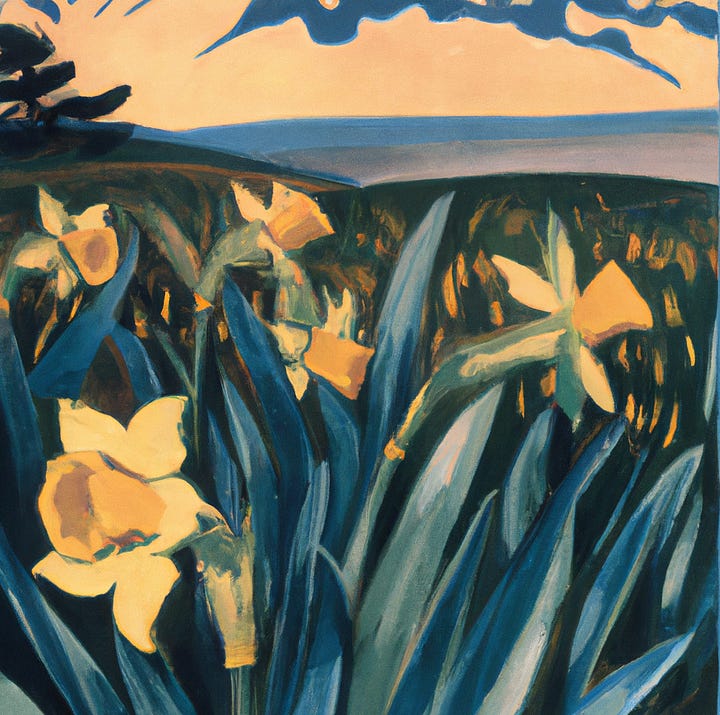Happy St. David’s Day! I hope you are all wandering lonely as clouds the float on high o’er vales and hills and that perhaps, no matter where you are, you come across a crowd, or even host, of golden daffodils.




As it is the first of March, the spring is, in some official sense, here. The blackthorns are blossoming, rooks are building nests and those silent bulbs are pushing upwards their brilliant heads like sunshine.
Wordworth’s daffodils were narcissus pseudonarcissus (which seems a bit harsh) with their pale “tepals” and a darker “trumpet”. They are the emblem of Wales, of course, and in Welsh they are Cennon pedr or “Peter’s Leek”. On brand, of course, but don’t be fooled: the bulbs and leaves are in fact poison and so should in no other respect be considered leeks.
As so often with the hopeful tropes of spring, the narcissus is tinged by the strain of death. In Greek mythology, self-loving Narcissus, unable to leave the allure of his image, eventually realised that his love could not be reciprocated and he melted away from the fire of passion, eventually turning into a gold and white flower; Persephone is carried off to the Underworld while picking narcissi, which are said to grow on the banks of the River Styx. In fact, in the Odyssey and the Necyomantia respectively, Homer and Lucian agree that the meadows of Elysium (where heroes go to die) are carpeted in daffodil-like flowers.
I prefer to think of them as the trumpet fanfare of the new spring, new life, new light and warmth. Here’s the last stanza of the famous Wordsworth poem:
For oft, when on my couch I lie
In vacant or in pensive mood,
They flash upon that inward eye
Which is the bliss of solitude;
And then my heart with pleasure fills,
And dances with the daffodils.
Daffodils. I love daffodils.




